Table of Contents
Introduction
Bamboo is more than just a fast-growing plant it is a symbol of strength, versatility, and green elegance. With hundreds of species ranging from towering giants to compact ornamental varieties, bamboo can serve a wide range of functions in Indian homes and farms.
Whether you are looking to add privacy screens, soil-binding ground covers, windbreaks, or simply a graceful touch of greenery to your balcony, there is a bamboo species that fits your needs. From the hills of Himachal Pradesh to the humid plains of Kerala, these plants thrive across India’s diverse climates. Their low-maintenance nature, eco-friendliness, and ornamental value make them a favorite among gardeners, landscapers, and agroforestry enthusiasts alike.
In this guide, we explore some of the most beautiful and useful bamboo plants you can grow in India, highlighting their characteristics, ideal growing conditions, and benefits.
15 Best Types of Bamboo
Moso Bamboo
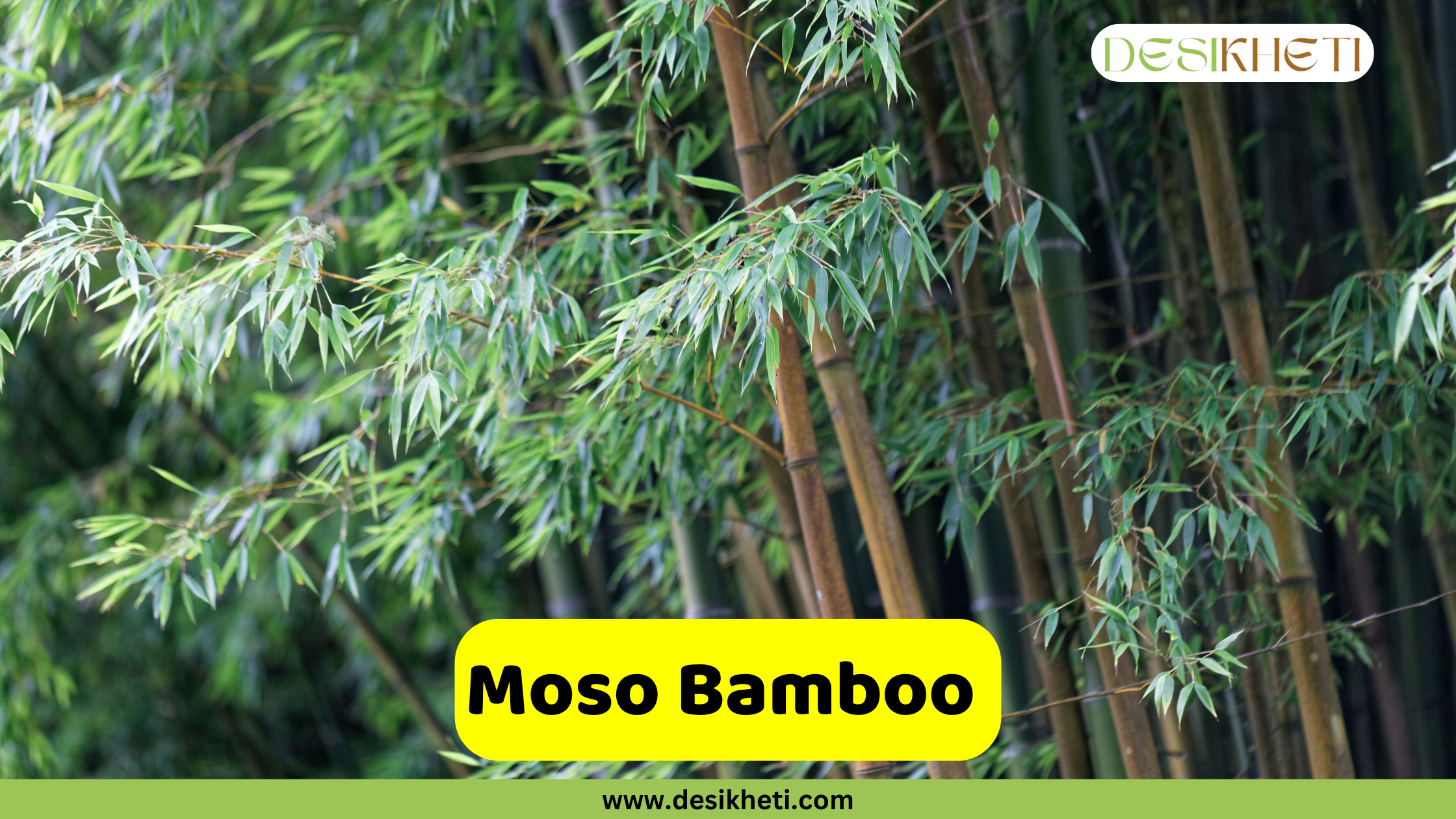
Botanical Name: Phyllostachys edulis
Moso Bamboo is native to China and Taiwan. It can adapt well to humid regions of India like Northeast India, parts of Odisha, West Bengal, and the Western Ghats. It is a running bamboo that spreads aggressively through underground rhizomes, requiring root control methods.
This bamboo can reach heights of 15 to 28 meters, with culm diameters of 10 to 18 cm. It thrives in moist, well-drained soils and requires ample sunlight and space for growth.
Uses and Benefits:
- High-quality timber for flooring, furniture, and veneer
- Edible shoots harvested commercially
- Used in handicrafts, paper pulp, and chopsticks
- Contributes to carbon sequestration and environmental sustainability
Guadua Bamboo
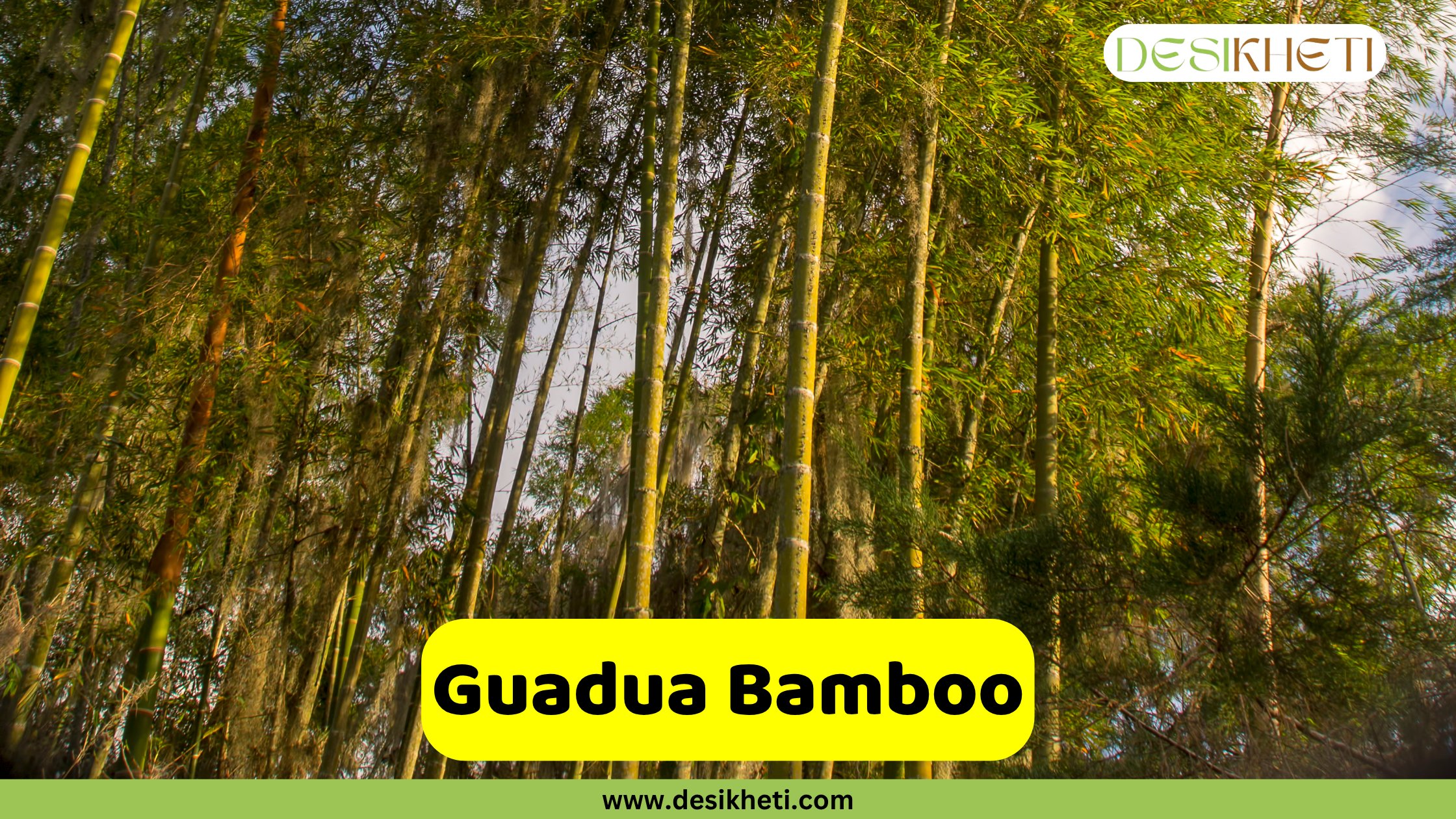
Botanical Name: Guadua angustifolia
Native to Central and South America, this bamboo is ideal for tropical and subtropical climates and can be grown in Kerala, Karnataka, Maharashtra, and Northeast India. It reaches 20 to 30 meters in height with culms 10 to 20 cm in diameter.
Known for its strength and structure, it grows best in loamy soil with consistent moisture and benefits from mulching and pruning.
Uses and Benefits:
- Used in structural construction like bridges and houses
- Suitable for heavy-duty furniture and eco-architecture
- Controls soil erosion on slopes and riverbanks
Golden Bamboo
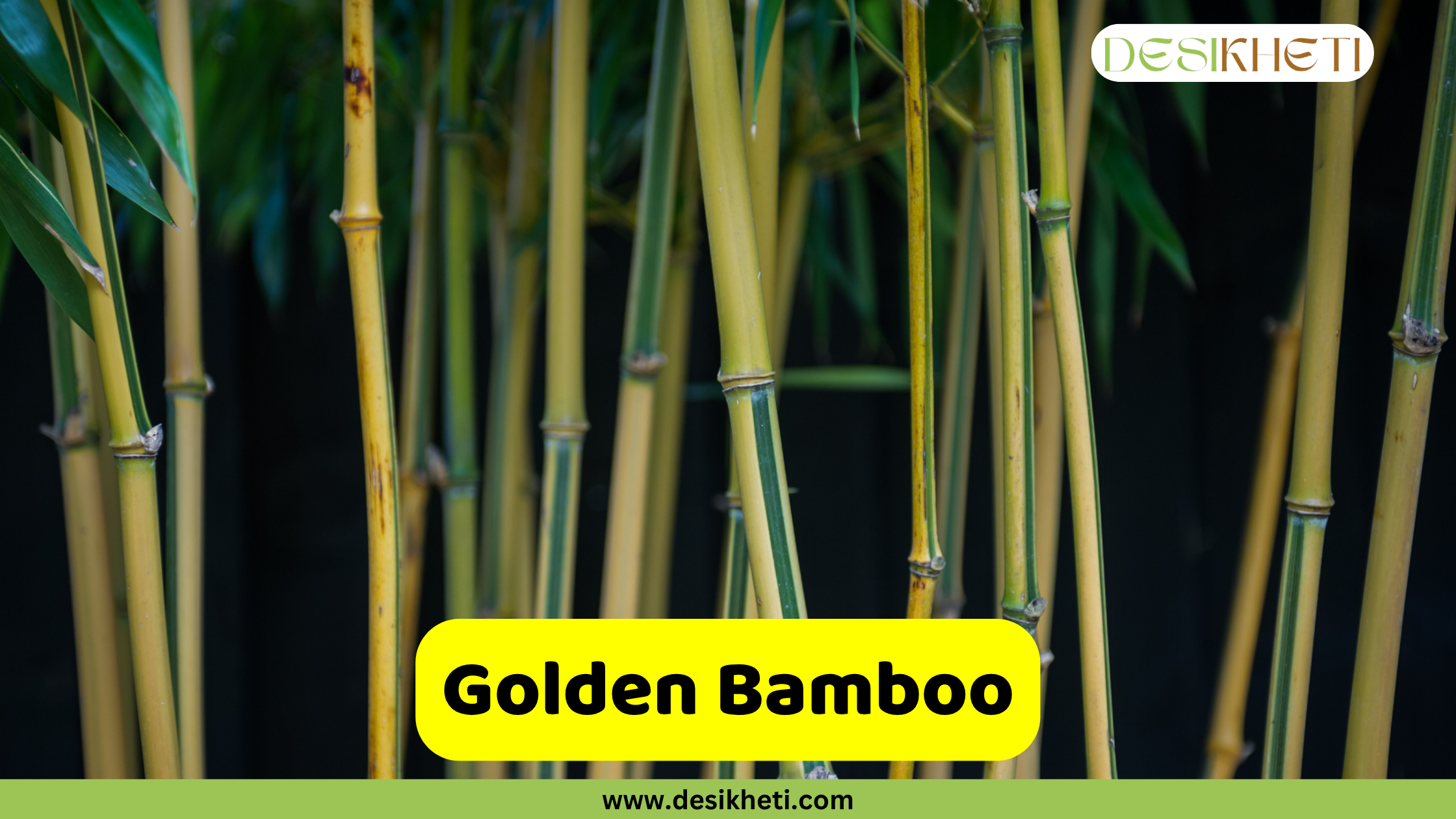
Botanical Name: Phyllostachys aurea
Golden Bamboo, also known as Fishpole Bamboo, is a running type originating from China. In India, it can be grown in states like Assam, Kerala, and West Bengal. It grows 6 to 12 meters tall with 3 to 6 cm thick culms, known for their golden-yellow hue. This species is fast-growing and needs regular monitoring due to its invasive nature.
Uses and Benefits:
- Attractive ornamental plant for gardens
- Used for privacy screens and windbreaks
- Poles suitable for staking and garden structures
- Good for small decorative crafts
Buddha Belly Bamboo
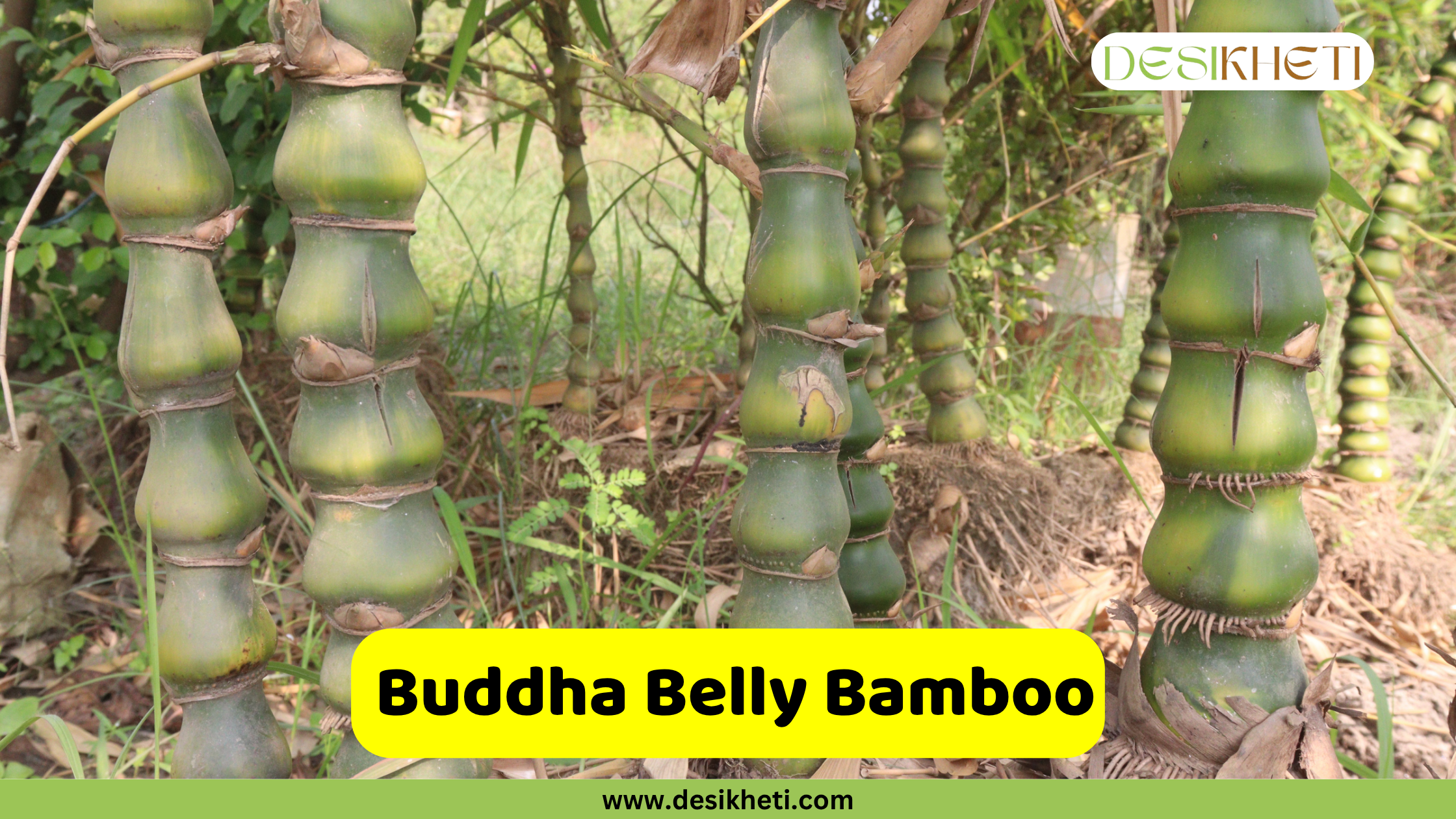
Botanical Name: Bambusa ventricosa
Buddha Belly Bamboo is native to Southeast Asia and can grow in humid Indian regions like Kerala, Karnataka, and Tamil Nadu. It is a clumping type, recognized for its swollen culms or “bellies” that form under stress.
It grows 3 to 10 meters tall and is ideal for small gardens or pots. The plant thrives in well-drained, rich soil with regular watering and pruning.
Uses and Benefits:
- Popular as an ornamental and bonsai plant
- Suitable for patios and urban spaces in pots
- Used in feng shui and as indoor décor
Timber Bamboo
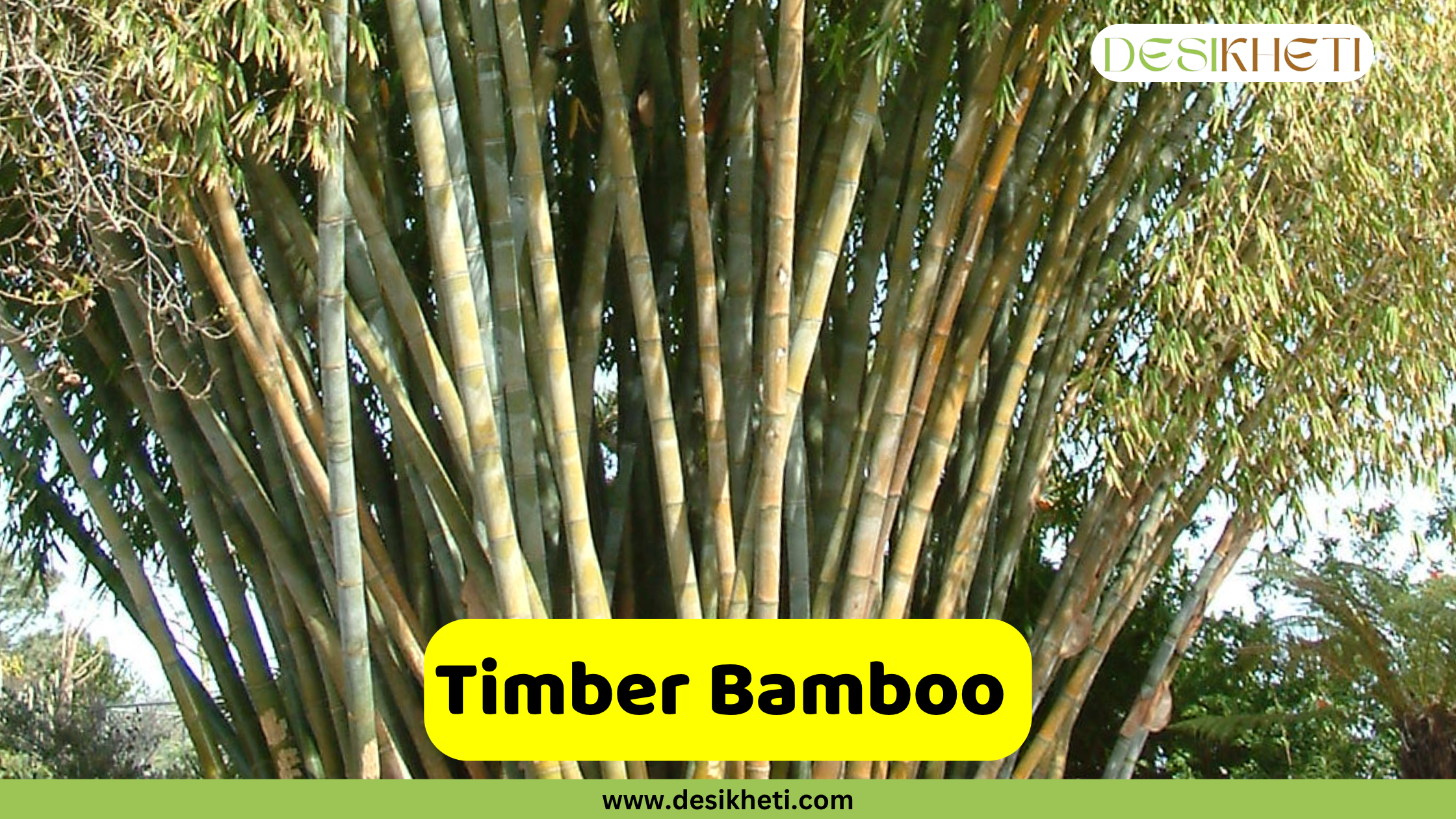
Botanical Name: Bambusa oldhamii
Timber Bamboo originates from Taiwan and China. It prefers subtropical to tropical climates with adequate moisture. It is a clumping bamboo that reaches 15 to 20 meters in height with 8 to 10 cm thick culms. Known for its tall, straight growth, it is suitable for multiple applications.
Uses and Benefits:
- Used in construction, furniture, and flooring
- Decorative element in large landscapes
- Makes musical instruments like flutes
Black Bamboo
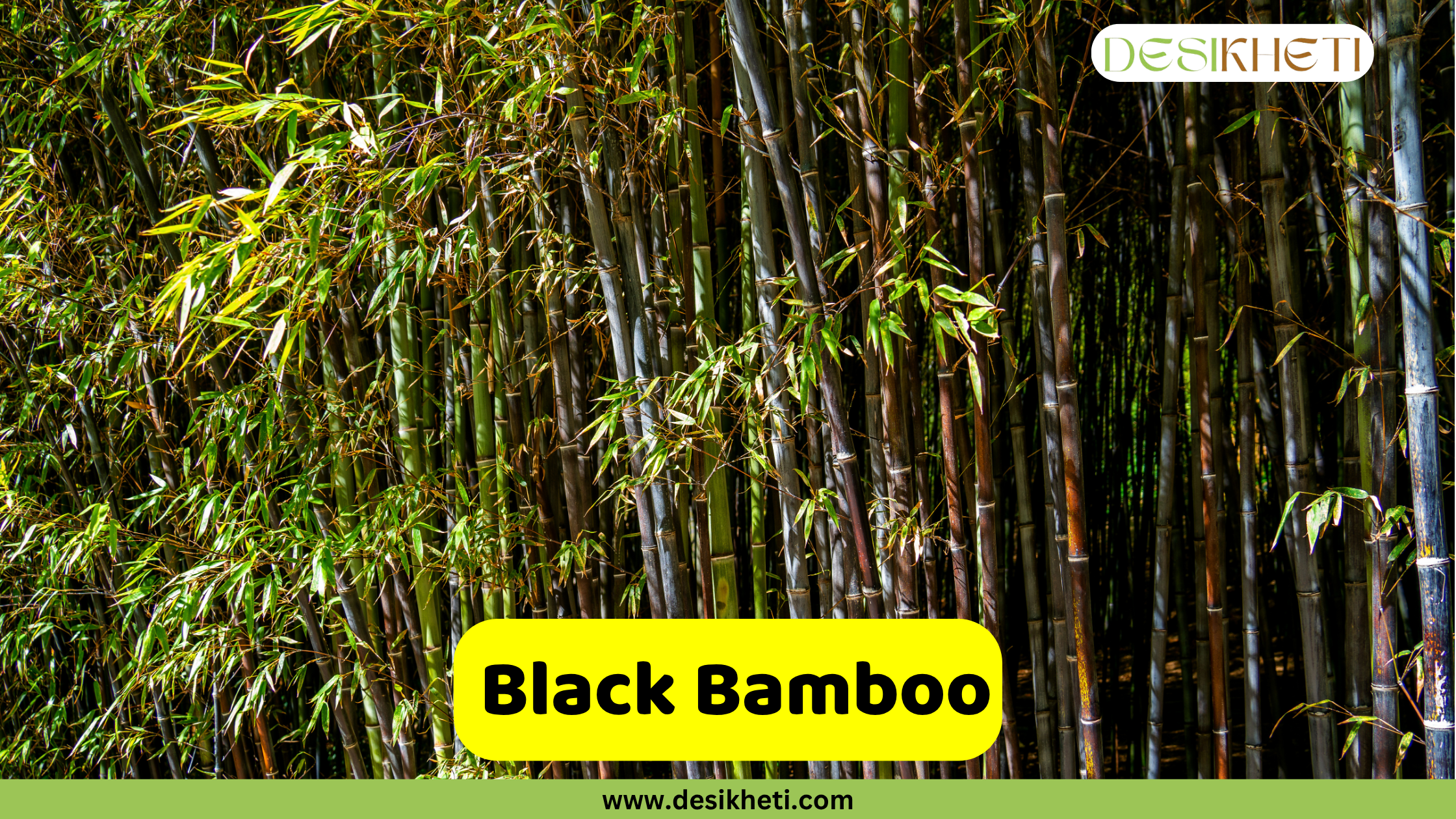
Botanical Name: Phyllostachys nigra
Black Bamboo is a running type native to China. It stands out for its dramatic black culms that start green and darken over time. It grows in temperate to subtropical regions of India, particularly in the Northeast and hill areas. It reaches 6 to 10 meters in height with 2.5 to 4.5 cm thick culms and prefers partial shade.
Uses and Benefits:
- Striking ornamental bamboo for landscape design
- Used in fencing and privacy screens
- Suitable for crafts and furniture due to unique black canes
Alphonse Karr Bamboo
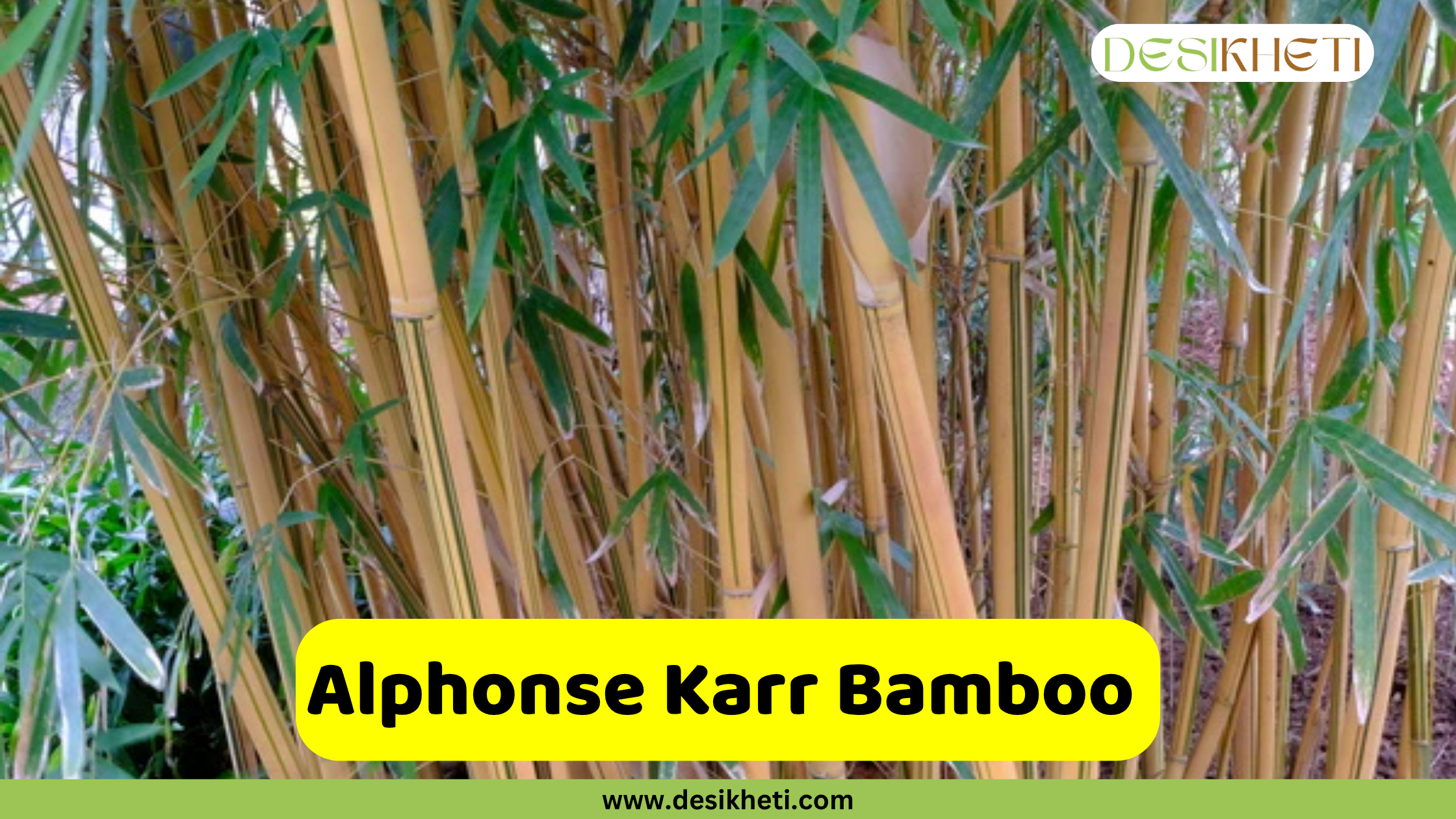
Botanical Name: Bambusa multiplex ‘Alphonse Karr’
Alphonse Karr Bamboo is a compact, clumping variety known for its ornamental appeal. It grows well in warm, humid to subtropical conditions and can be cultivated in Indian states like Tamil Nadu and West Bengal.
It reaches 3 to 6 meters in height and features yellow culms with green stripes. It is ideal for gardens, pots, and borders.
Uses and Benefits:
- Excellent for hedges, borders, and garden screens
- Performs well in pots for patios and balconies
- Used for decorative natural fencing
Giant Bamboo

Botanical Name: Dendrocalamus giganteus
Giant Bamboo is one of the tallest bamboo species, native to Southeast Asia, and thrives in humid Indian states such as Assam, Odisha, and Kerala. It is a clumping type that can grow up to 25 to 35 meters in height with culms 15 to 30 cm in diameter. It requires deep, loamy soil and ample moisture for optimum growth.
Uses and Benefits:
- Construction material for scaffolding and bridges
- Ideal for paper and pulp production
- Effective in controlling soil erosion
- Used in making large utility crafts
Fargesia Bamboo
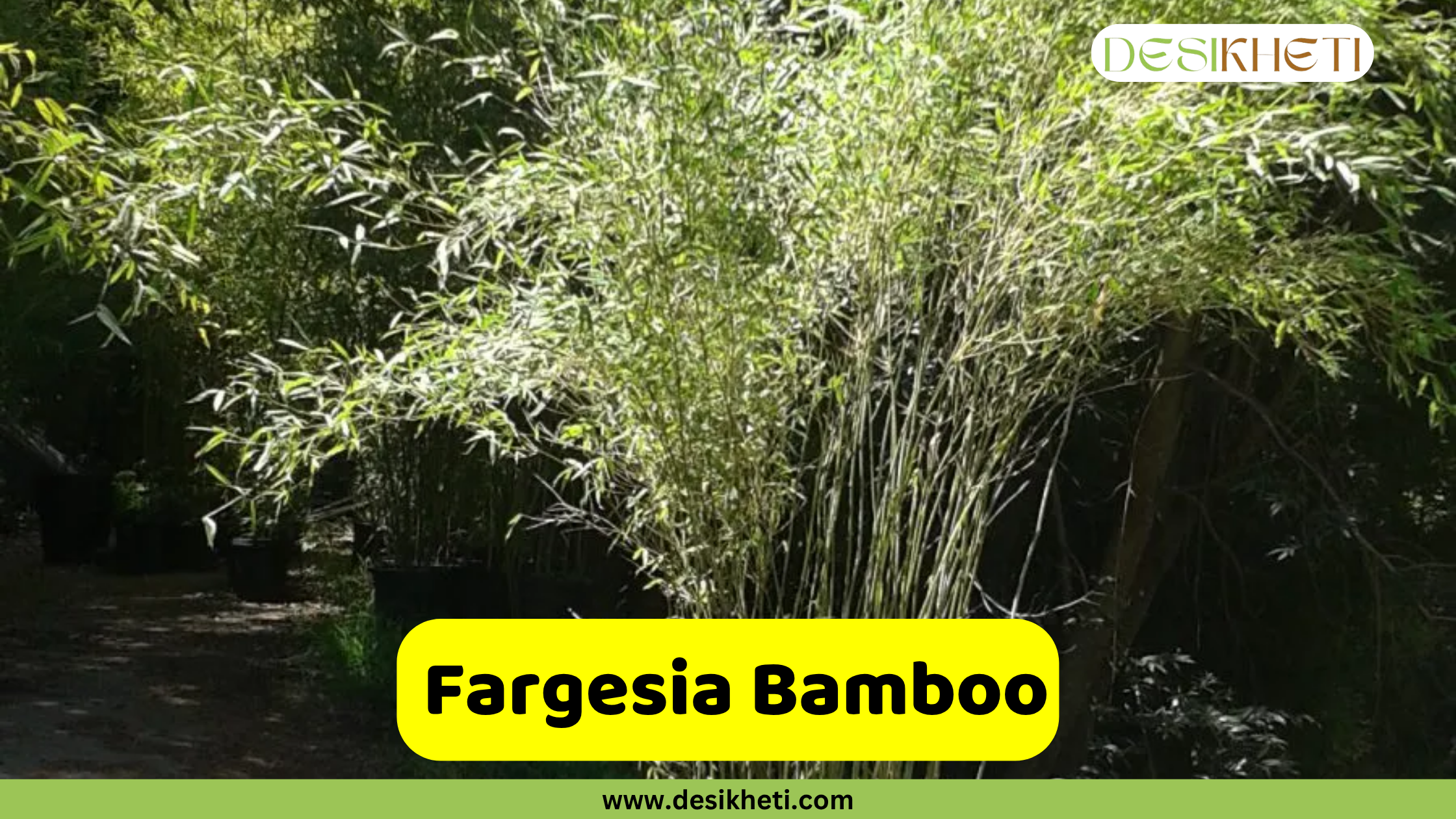
Botanical Name: Fargesia spp. (e.g., Fargesia murielae)
Fargesia, also known as Umbrella Bamboo, is native to the mountainous regions of China and the Himalayas. It thrives in cool temperate and high-altitude subtropical climates, making it ideal for regions like Sikkim, Himachal Pradesh, Uttarakhand, and Northeast India.
It typically grows between 2 to 5 meters tall with culms 1.5 to 3 cm in diameter. Its slow-spreading, clumping growth habit makes it non-invasive and perfect for controlled gardens.
Uses and Benefits:
- Decorative use in walkways, gardens, and containers
- Suitable for small patios and balconies
- Requires minimal pruning and is easy to maintain
Dwarf Green Stripe Bamboo
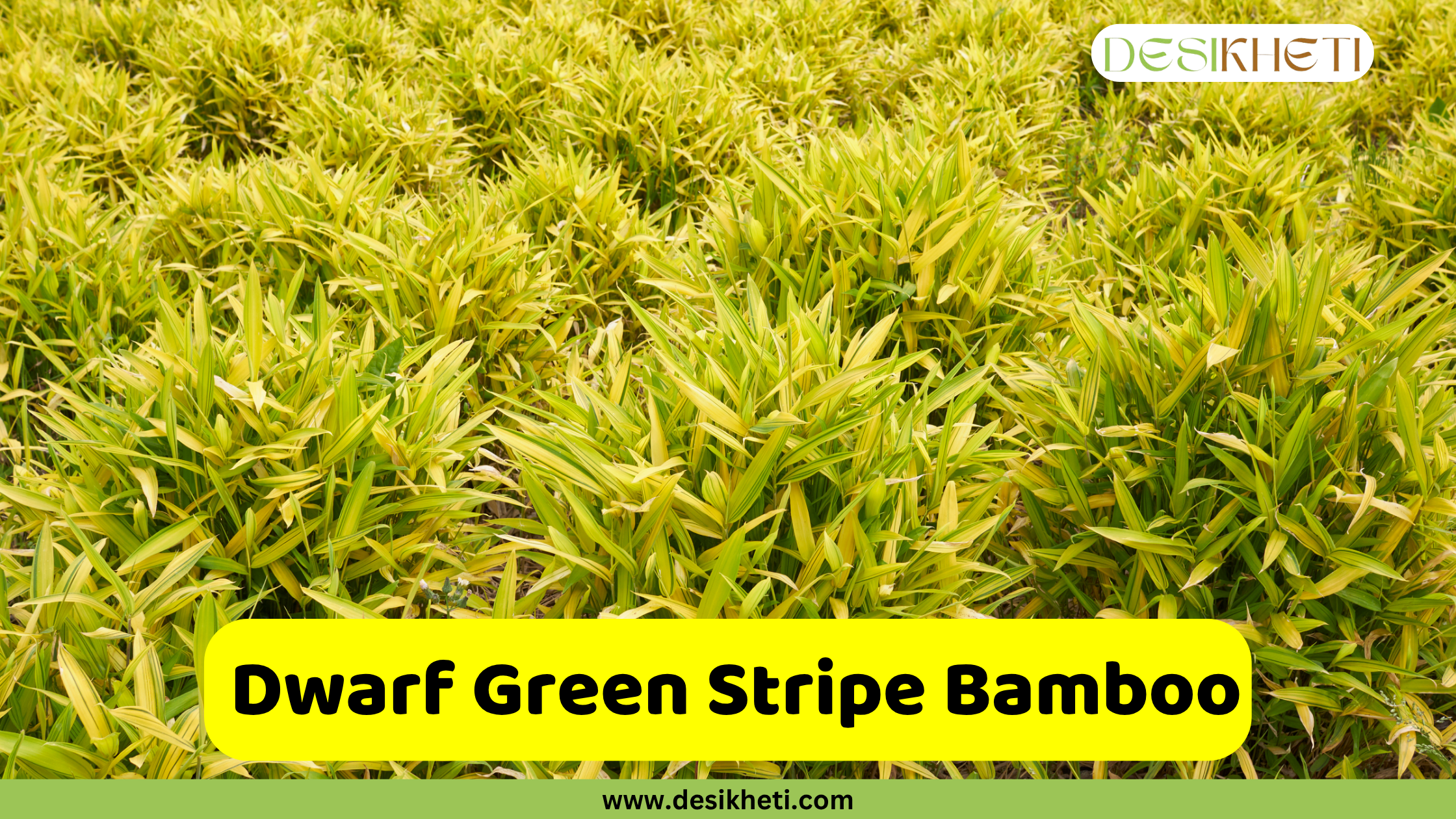
Botanical Name: Pleioblastus viridistriatus
This Japanese-origin bamboo is known for its vibrant green and yellow striped leaves. It grows best in mild temperate to subtropical climates and is suitable for Indian hill stations and shaded urban gardens. As a running bamboo, it can spread aggressively if not properly contained. This dwarf variety grows around 0.6 to 1 meter tall with fine culms of 0.5 to 1 cm diameter.
Uses and Benefits:
- Excellent ground cover for colorful garden beds
- Ideal for container gardening and bonsai-style displays
- Helps in erosion control on slopes
Dragon Head Bamboo

Botanical Name: Fargesia rufa
Dragon Head Bamboo is native to China’s southwestern mountain forests. It is a compact, clumping bamboo perfect for temperate Indian hill regions. It grows best in cool, moist environments and shaded areas.
The plant reaches 2 to 3.5 meters in height, with slender culms about 1 to 2 cm in diameter. Its bushy form makes it particularly effective as a hedge.
Uses and Benefits:
- Ideal for shaded ornamental borders
- Perfect for container planting on patios
- Supports birdlife and small pollinators
Bambusa Balcooa

Botanical Name: Bambusa balcooa
Bambusa Balcooa is a tropical clumping bamboo known for its exceptionally thick-walled culms and superior strength. Native to the Indian subcontinent, it thrives in tropical and subtropical climates, especially in states like West Bengal, Assam, Odisha, Maharashtra, and parts of South India.
It grows 12 to 20 meters tall, with culm diameters ranging from 8 to 15 cm. The culms are straight, sturdy, and greenish-gray, maturing into strong timber ideal for various commercial uses.
Uses and Benefits:
- Strong culms used in construction, scaffolding, and fencing
- Ideal for the paper and pulp industries due to high cellulose content
- Provides shade and structure in agroforestry systems
Malay Dwarf Bamboo

Botanical Name: Bambusa heterostachya ‘Malay Dwarf’
This bamboo is native to Southeast Asia and thrives in the hot and humid climates of India’s southern states. As a clumping bamboo, it is also suitable for small gardens, urban landscaping, or pot cultivation.
Growing up to 3 meters tall, with culms 1 to 2 cm wide, Malay Dwarf Bamboo is bushy and upright. Its thick foliage and neat form make it a natural choice for privacy hedges or low walls.
Uses and Benefits:
- Excellent for hedges and screening
- Helps prevent soil erosion on slopes
- Low-maintenance
Arrow Bamboo

Botanical Name: Pseudosasa japonica
Arrow Bamboo is a running type that can be grown in the cool and temperate hill areas of India. With upright growth and dark green, broad leaves, it is a popular landscape bamboo for privacy and shade.
It typically reaches 3 to 5 meters in height, with strong culms measuring 2 to 3 cm. Though a running bamboo, it can be managed well with pots or root barriers.
Uses and Benefits:
- Natural privacy fence in shady areas
- Decorative landscaping in cooler climates
- Used in traditional Japanese arrow making
- Effective windbreak for gardens and fields
Blue Bamboo

Botanical Name: Bambusa chungii
Blue Bamboo, named for its striking bluish culms, is a tropical clumping bamboo from southern China. It can be grown in Indian regions like West Bengal, Assam, and Kerala where humidity levels are high.
Reaching a height of 9 to 12 meters, this bamboo has thick culms (5 to 7 cm) with powdery-blue sheaths, giving it an exotic appearance. Its elegant, upright growth adds grandeur to landscapes.
Uses and Benefits:
- Highly ornamental, ideal for exotic landscaping
- Culms used in light construction and furniture
- Adds tropical appeal to resorts and large gardens
Other Bamboo Varieties
- Solid Bamboo
- Giant Thorny Bamboo
- Monastery Bamboo
- African Lowland Bamboo
- Black Asper Bamboo
- Chilean Bamboo
- Edible Bamboo
- Slender Bamboo
- String Bamboo
- Himalayan Dwarf Bamboo
Growing and Care Tips for Bamboo Plants in India
- Choose the Right Species: Select bamboo based on your climate, space, and purpose. Use clumping varieties for home gardens and running types for open landscapes (with proper containment).
- Sunlight Needs: Most bamboos prefer partial to full sunlight. Hill and temperate species like Fargesia grow well in cooler, shaded areas.
- Soil Type: Bamboo thrives in well-drained, loamy or sandy soil enriched with organic compost. Avoid waterlogged areas.
- Watering: Keep the soil consistently moist, especially during the growing season. Newly planted bamboo requires regular watering to establish roots.
- Mulching: Add a thick layer of organic mulch like leaves or straw to conserve moisture, suppress weeds, and protect roots.
- Fertilization: Feed with compost or organic fertilizer twice a year once in early spring and again in mid-monsoon for lush, healthy growth.
- Pruning & Maintenance: Remove old, yellowing, or weak culms once a year to keep the plant tidy and improve airflow.
- Container Growing: Use large, deep pots for dwarf and ornamental varieties. Ensure proper drainage and root space.
- Control Running Bamboo: For running types, install underground root barriers or grow them in containers to prevent unwanted spreading.
Bamboo is truly a wonder plant eco-friendly, fast-growing, and deeply rooted in both traditional and modern landscaping. Whether you choose a compact clumping variety for your terrace garden or a tall species for wind protection or privacy, bamboo offers unmatched value and beauty. With minimal maintenance and multiple environmental benefits such as carbon sequestration and erosion control, bamboo is a smart, sustainable choice for Indian growers and garden lovers.
Have you ever grown bamboo in your garden or on your farm?
We’d love to hear about your experiences, tips, or questions in the comments below.
FAQs on Bamboo
1. What is Moso bamboo used for?
A. Moso bamboo is used for construction, flooring, paper, textiles, furniture, and as a sustainable alternative to timber.
2. What is the lifespan of Moso bamboo?
A. Moso bamboo typically lives for 10 to 15 years, with individual culms lasting around 5 to 7 years before being replaced.
3. What is the difference between clumping and running bamboo types?
A. Clumping bamboo grows in tight clusters and spreads slowly, while running bamboo spreads aggressively through underground rhizomes.
4. What is Guadua bamboo used for?
A. Guadua bamboo is a strong, thick-walled bamboo used in construction, bridges, scaffolding, and eco-friendly architecture.
5. How long does golden bamboo take to grow?
A. Golden bamboo grows rapidly, often reaching full height (15–30 feet) in 2 to 3 years under ideal conditions.
6. What are the benefits of golden bamboo?
A. Golden bamboo is valued for privacy screens, erosion control, fast growth, and aesthetic landscaping.
7. What is Buddha’s Belly Bamboo used for?
A. It’s used in ornamental gardens, bonsai, and feng shui for its unique swollen internodes and artistic appearance.
8. How long does Black Bamboo take to grow?
A. Black Bamboo takes 2 to 3 years to mature and develop its distinctive black culms after initial planting.
9. What is another name for Black Bamboo?
A. Black Bamboo is also known as Phyllostachys nigra.
10. What is the root system of Alphonse Karr Bamboo?
A. Alphonse Karr Bamboo has a clumping root system, making it non-invasive and easy to manage in landscapes.
11. What kills bamboo permanently?
A. Repeated cutting combined with herbicide treatment or digging out rhizomes can kill bamboo permanently.
12. What is the common name for Pleioblastus viridistriatus?
A. It’s commonly called Dwarf Green Stripe Bamboo.
13. Is Dwarf Bamboo an evergreen?
A. Yes, Dwarf Bamboo is an evergreen and retains its foliage year-round.
14. What is Dwarf Bamboo used for?
A. Dwarf Bamboo is used for ground cover, erosion control, and ornamental landscaping.
15. Is Dragon Head Bamboo invasive?
A. No, Dragon Head Bamboo (Fargesia dracocephala) is non-invasive and clumping, making it suitable for contained gardens.
16. What is Arrow Bamboo used for?
A. Arrow Bamboo (Pseudosasa japonica) is used in screening, fencing, and sometimes for crafting arrows due to its straight culms.
17. What is the scientific name for Blue Bamboo?
A. The scientific name is Bambusa chungii.
18. Is Blue Bamboo clumping or running?
A. Blue Bamboo is a clumping variety, making it non-invasive and ideal for landscaping.
